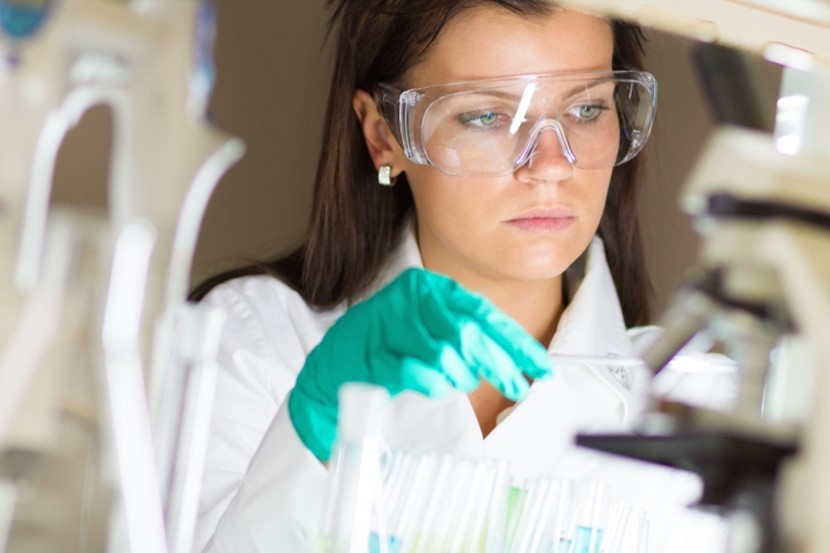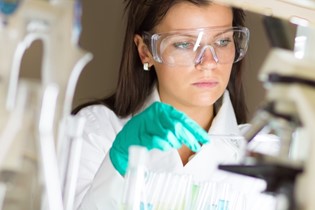The future of infertility

A lot has happened in the world of fertility treatment since the first IVF baby was born 35 years ago. Dr Andrew Murray investigates what’s new and what to expect in future
One of the exciting things about working in this particular area of medicine is the rapid pace in which technology evolves. It is amazing to think how far fertility medicine has advanced since the birth of the first IVF baby, Louise Brown, back in 1978.
The core ingredients to make a healthy baby have remained unchanged over time – eggs, sperm (which together make an embryo) and a womb (uterus) for the embryo to develop into a healthy baby. Any advances in fertility treatment focus on these core ingredients in order to optimize the chances of success.
Some of the latest developments are already here, whilst others will continue to be trialled and improved until they become mainstream. Here are some that we are seeing in our practice.
IMSI
IMSI stands for Intra-cytoplasmic Morphologically Selected Sperm Injection. It is an advancement on the conventional ICSI, or Intra-cytoplasmic Sperm Injection. In ICSI sperm are selected at 200x magnification, which allows the embryologist to select sperm for egg injection based on the sperm’s movement and the shape of the sperm’s head.
IMSI is designed around recent advances in optics and computer enhancement of digital images. It’s similar to the difference in picture quality from traditional to high definition televisions. Newly designed lenses and microscope condensers allow 600x magnification, and then digital imaging boosts the effective magnification to 6000x.
This means embryologists can see the sperm head in a lot more detail and, in particular, features inside the sperm head which are thought to be associated with incorrect packaging of DNA. Poor packaging can make the sperm’s DNA more susceptible to oxidation damage, which in turn may be associated with lower pregnancy rates and possibly higher miscarriage rates.
Time lapse photography
During IVF embryos are normally cultured in an incubator for three to five days. Until recently the embryologist selected the best embryo to replace based on how it looked each day after fertilisation. This has a number of disadvantages.
First of all, to look at the embryo the incubator has to be opened, and the embryo disturbed at this very delicate time. Even subtle changes in the local environment (temperature, gas concentrations, pH, ultraviolet light) may have an impact on the quality of the embryo. Daily examination also only provides a snapshot of what the embryo is doing at that point in time.
Time lapse photography during IVF is when a camera is installed inside the incubator and takes a photo every few minutes. The images are run together to make a “movie” of the embryos as they develop.
New insights can be gained from watching the embryos develop. For example, embryos that are slow to divide may have a higher rate of genetic abnormalities. Two embryos that may look the same on day five may have had very different pathways to get there. One may have a higher chance of making a baby based on how the cells were dividing in the preceding days.
Typically, using time lapse photography can reduce disturbance to the embryos, as the incubator lid can be kept shut whilst the cameras are rolling providing the very first “home movies” of the developing embryos. We can then observe the differences in development; these observations can then be used to select which embryo should be replaced.
Pre-implantation genetic screening (PGS)
In pre-implantation genetic screening, embryos created through IVF can be tested for either single gene problems such as cystic fibrosis, or screened for chromosomal abnormalities that may make miscarriage more likely. This isn’t new technology, but the costs are coming down and the reliability is improving to the point where one day PGS is likely to be applied whenever IVF is used.
The women most likely to benefit from this are those with recurrent miscarriages, and those trying to start their families later in life. As women get older the proportion of eggs with pre-existing chromosomal abnormalities increases. Consequently for women over 35 at least 50% of the embryos created from their own eggs are likely to have chromosomal abnormalities. PGS means those embryos free of abnormalities can be selected.
Another group of women we are seeing more of are those who have found they are carriers of the breast cancer gene BRACA. Depending on the sub-type, the lifetime risk of those women developing breast cancer can be up to 80% and ovarian cancer 40%. These women have a 50% chance of passing the gene on to their children, so many choose to undergo PGS, even if they haven’t developed cancer themselves.
Social egg freezing
A topic we have been talking about lately is the biological clock and the need for couples to not “leave it too late”. Women today are having babies later than ever before due to a number of factors, such as travel and education as well as busy careers or simply not yet finding the right partner.

Social egg freezing offers women the opportunity to lock in their potential for a baby. Clearly the younger you are when you freeze the eggs, the better. For example, the chances of having a baby naturally at age 30 is about 20% per month, but reduces to 5% per month by age 40. Some women do manage to conceive naturally, however we see many people in this age group who need fertility assistance.
How is it done? The same fertility drugs used in IVF are given (normally 10 days of daily injections) followed by an outpatient procedure, where the eggs are retrieved from the ovaries under sedation. The eggs can then be frozen for up to 10 years (the legal time limit for egg storage in New Zealand) and subsequently thawed when needed.
The earlier women can preserve their fertility the better their chances of pregnancy later in life. We suggest that women have the conversation with their GP and find out their fertility options, even if they are not ready to have a baby just yet.
What may have seemed pure fantasy in the past is already now reality. As with any new techniques in medicine it is important their safety is established before they are widely adopted. Incremental improvements add up over time. There have certainly been massive improvements in what can be done for fertility in the last three decades.
|
Andrew Murray is Medical Director of Fertility Associates Wellington and a New Zealand Committee Member of the Royal Australia and New Zealand College of Obstetricians and Gynaecologists (RANZCOG). He is also a Senior Lecturer at Wellington School of Medicine and the University of Otago and one of the consultant obstetricians and gynaecologists at Wellington Hospital. |

AS FEATURED IN ISSUE 27 OF OHbaby! MAGAZINE. CHECK OUT OTHER ARTICLES IN THIS ISSUE BELOW

















